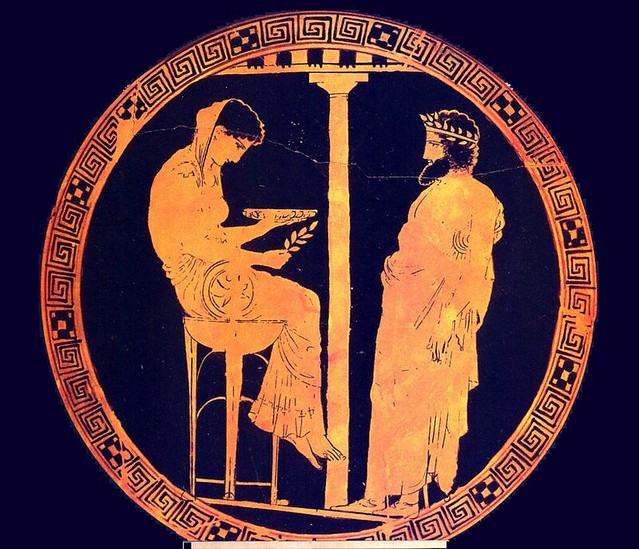The doll is a curious and polyvalent symbol. On the one hand, there is no shortage of creepy dolls in horror movies. Furthermore, in his Dictionary of Symbols, Juan Eduardo Cirlot speaks of dolls solely in the context of psychopathology and “a regression to an infantile state.” To add to this dark portrayal of dolls, they have been used to symbolize stiff social roles of women expected to behave and look in a certain way. In Ibsen’s play A Doll’s House the main character talks bitterly of her married life:
“I have been your doll wife, just as at home I was Daddy’s doll child. And the children in turn have been my dolls. I thought it was fun when you came and played with me, just as they thought it was fun when I went to play with them. That’s been our marriage, Torvald.”

Nevertheless, in ancient civilizations dolls played a magic role, alongside their socializing function. In ancient Greece, dolls were very popular as votive offerings and were found in large numbers near caves of the nymphs. (1) The word “numphe” in ancient Greek, which signified a female divinity on the one hand and a bride on the other, was also sometimes used to refer to dolls. On the one hand, nymphs were perceived as divine beings, who were “sexually desirable, free of familial restrictions,” but they also held patronage over bridal rites and female rites of social transition. Larson explains:
“The ornamentation … of the doll corresponds to the value placed upon conventional measures of female beauty, especially in the contexts of … wedding.” (2)

Also Marija Gimbutas mentions the role dolls played during the celebration of the pagan festival of Imbolc, known as Brigid’s Day:
“Her feast on February first, Imbolc, celebrated the first signs of spring and the lactation of the ewes, symbolizing new life. It was the day of purification and homage to the goddess. People poured milk on the ground as an offering and baked special cakes. Girls carried dolls in her image in procession through the town, and each house welcomed the goddess.” (3)
Clarissa Pinkola Estés offers as a very unique and beautiful perspective on the lost symbolic meaning of dolls. She approaches it through the tale of Vasilisa, who received a wooden doll as a gift from a dying mother. The doll proved to be of supernatural help to her as a voice of inner wisdom and intuition. In the absence of her mother, Vasilisa received guidance, comfort and nurturance from the doll.

Estés writes:
“For centuries humans have felt that dolls emanate both a holiness and mana—an awesome and compelling presence which acts upon persons, changing them spiritually.
…
The doll is the symbolic homunculi, little life. It is the symbol of what lies buried in humans that is numinous. It is a small and glowing facsimile of the original Self. Superficially, it is just a doll. But inversely, it represents a little piece of soul that carries all the knowledge of the larger soul-Self. In the doll is the voice, in diminutive, of old La Que Sabe, The One Who Knows.” (4)
Although the dolls may symbolize soullessness, the healthy life of the psyche cut short by death or madness or the stifling social expectations towards women; they also stand for the wisdom and numinosity of the inner voice whispering to us from the depth of the heart.


Notes
(1) Jennifer Larson, Greek Nymphs: Myth, Cult, Lore, Kindle edition
(2) Ibid.
(3) Marija Gimbutas, The Living Goddesses, ed. by Miriam R. Dexter, University of California Press, 12 Jan 2001, p. 249
(4) Clarissa Pinkola Estés, Women Who Run with the Wolves: Myths and Stories of the Wild Woman Archetype, Kindle edition

Support my blog
If you appreciate my writing, consider donating to support my work. Thank you very much in advance.
$1.00











